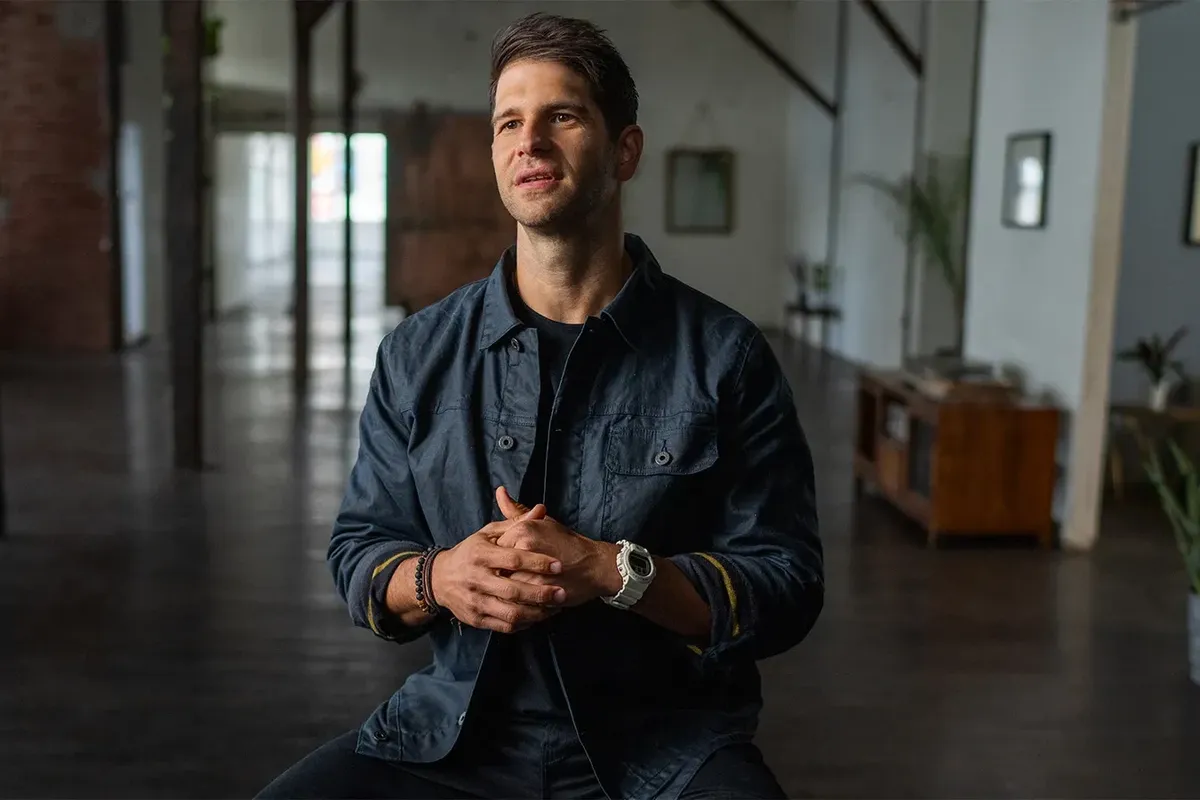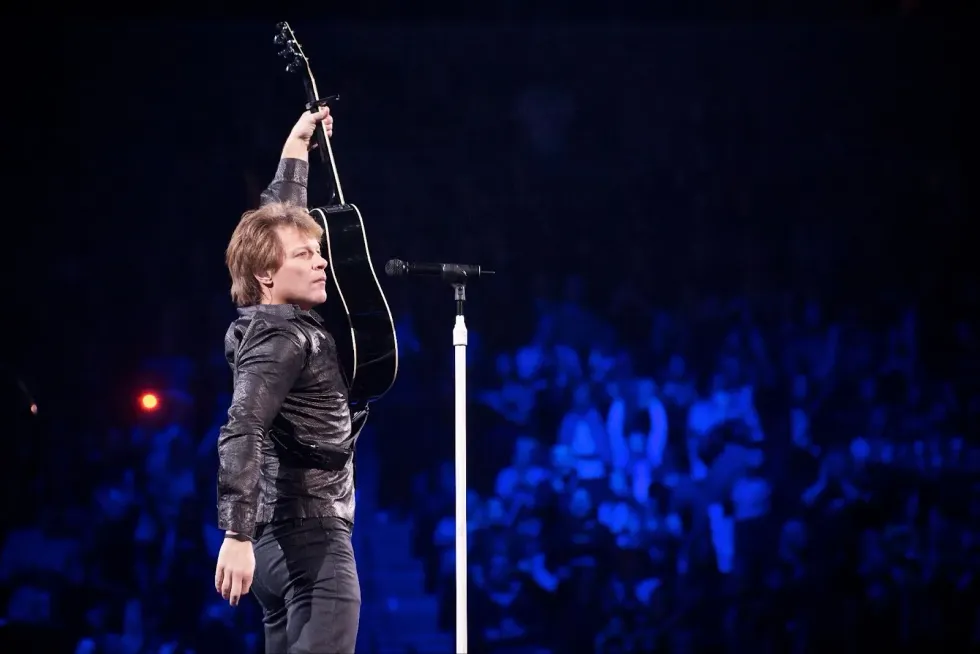
This post was written by Michelle Gallina and originally appeared on the Adobe blog on May 28th, 2024.
From New Jersey nightclubs to massive global fame, this series offers an inside look back into the band’s path to stardom as they prepare to launch their 2022 tour.
Producer and editor Alex Trudeau Viriato played a critical creative role in shaping the series. We sat down with Alex to learn more about his editing process and how he used Adobe Premiere Pro and Frame.io to create this docuseries.
You can learn more about Alex’s editing process and hear from Jon Bon Jovi himself below, and you can watch the series now streaming on Hulu here.

How and where did you first learn to edit?
I started editing trailers in high school. I would take movies I loved and make my own trailers for extra credit. Those were just for fun, but I really learned how to edit stories after I graduated from film school. At that time, I took any editing job I could get, and I learned by doing it over and over. I cut my thesis film (that I also directed), and that’s when I truly discovered the creative power an editor has.
How do you begin a project/set up your workspace?
I start by watching everything we have. I like to go through all the material before I start piecing anything together — that’s when I’m learning, taking notes, color coordinating clips, and labeling moments or lines that I like.

Tell us about a favorite scene or moment from this project and why it stands out to you.
I remember the first time I read about the 240-show tour of “Slippery When Wet” in 1986. The schedule sounded so exhausting — just reading the descriptions, I could feel it. I wanted to accomplish that same feeling in episode two. I wanted the touring, performing and routine to feel exhausting to the viewer, so I cut it at a cadence that was on the brink of being too fast, too much but kept it on the edge. So, when the scene is over, the viewer would take a breath, like they just experienced something that was overwhelming.
What were some specific post-production challenges you faced that were unique to your project? How did you go about solving them?
One of the challenges we had in post was the unpredictable amount of footage we would get and not knowing when we would get it. Some weeks we would get 50 clips, other weeks just a couple. I would be editing with what we had, but the next week we might get multiple relevant clips and would need to reconsider the edit and the focal part of the story. One archival clip could change the entire perspective of the scene. We were constantly pivoting and considering new pieces. We had a great archival producer, Shane Munguia, who weathered the barrage of footage we received while also getting all the licensing.
On top of that, I was not the only editor — we brought in Brady Hammes to edit episode three. Brady and I had worked a little on “Man in the Arena”, and I was excited to collaborate with him again since I felt he would understand the subtext of this story. After adding Brady, we now had multiple episodes going at once and needed to keep everything fluid. We had to make sure, thematically, that there was no overlap and wanted each episode to have its own arc without feeling repetitive. We also needed another assistant editor, Charlie Manclark, who is incredibly talented and also a stud editor. Those two worked as a duo while Charles and I would be working on another episode.
What Adobe tools did you use on this project and why did you originally choose them? Why were they the best choice for this project?
Adobe Premiere Pro’s ability to transcribe a clip as well as the sequence is such an incredible new feature. We saved so much time by searching for words or sentences. We also had the project in Productions in Premiere Pro, which keeps everything running even when the sequences get big and the archival clips are in the hundreds. This allowed us to have multiple editors and assistant editors working in different projects at the same time.
We also always use Frame.io. Our entire team was working remotely, so I was cutting the series from my room at home. When I felt good about a cut, I would share it with our team on Frame io. The most helpful feature is that our EP Giselle, or director, Gotham could leave notes on the exact timecode. I could then respond directly within Frame.io and acknowledge the note or give context on why an edit was a certain way. Something else that is extremely helpful is the ability to upload a new version of a cut without creating a new link. I could upload an updated version, and it retains both versions, on the same link.
What do you like about Premiere Pro, and/or any of the other tools you used?
For me, it’s a lot about the way it looks, and the way I can move clips around the timeline. I’m a visual person and seeing everything color coordinated is helpful. I like to move pieces around the timeline to try different things without having to worry about unlinking clips or having them go out of sync. The effects panel is also such a time saver. Using this panel, I can easily manipulate the clips, and I don’t have to add an effect. That seems like such a small thing, but when you’re managing hundreds of clips, it makes a difference.

What’s your hidden gem/favorite workflow tip in Adobe Creative Cloud?
I have two workflow tips. One, find a collaborator — AE, director, producer — someone that you can regroup with in the morning. For me, it’s my assistant editor Charles Farrell. We talk every morning before we get started to discuss what the plan is, who’s doing what, and what’s working. Especially if you’re working remotely, it’s important to find someone to check in with. You don’t want to be stuck in a bubble.
Secondly, workflow is also about getting away from the computer. Go outside, hike, run, and explore. Stepping away from an edit can sometimes be the best thing for it. On my desk I have a flag from a region in Patagonia where I went backpacking in the middle of editing this project. It serves as a reminder to explore and have my own adventures, not just edit other people’s experiences.

Who is your creative inspiration and why?
Jimmy Chin because of his versatility and his relationship with filmmaking and the outdoors. He’s found a way to have a family while being an incredible photographer, rock climber, and filmmaker. The balance he has found, and his talents are inspiring.
What’s the toughest thing you’ve had to face in your career and how did you overcome it? What advice do you have for aspiring filmmakers?
When I first started working as an editor, I was taking every job I could get, which was a lot of web series or very small commercials. They didn’t pay well, and I floated between those and unemployment. I had just become a new Dad, so my priorities were shifting, and I started to question the dream of making movies for a living. I stayed the course and kept working and meeting as many editors as I could. When I would edit commercials, I would always put my intentions out there that I wanted to be editing long form. Eventually, I honed in my skills, elevated my work, and made contacts that lead to my first feature doc, “Unbanned”.
My advice for aspiring filmmakers would be to keep at it — work hard, network and take as many jobs as you can in the beginning so you can start honing your craft. Make sure to surround yourself with people you want to spend 10 hours in the editing bay with (sometimes I chose the team over the subject matter). Collaborating and creating can be so rewarding when you’re surrounded by people you enjoy being with. Also, don’t set out for just one genre or just one craft, being creative for a living is incredibly rewarding, but the path takes turns and detours you never expected — be open to those as well.
Share a photo of where you work. What’s your favorite thing about your workspace and why?
My workspace is a collection of things that bring me joy, including books from projects I’m proud of, items given to me by my family, and reminders of what I strive for away from the computer. As I mentioned before, I have the flag of Magallanes (Patagonia/Chile) on my desk to remind myself to explore and have my own adventures.
I also have a little figure of Bandit, the Dad from Bluey. He’s the benchmark of a present and creative Dad. Working from home during the pandemic was a balance that took time, and it wasn’t easy being at home and available to spend time with my kids while also trying to focus on work. Over the years, I’ve gotten much better at finding a balance, and it came down to being present with my boys when I was giving them my attention. Bandit’s character always has that five minutes to fully commit to creativity and play with Bluey. So yes, it may be a fictional cartoon, but I think about him and stepping away from the computer for a few minutes to play would never erase the progress of my work. I can usually find time to finish the work, but I can’t always have the alignment of my kids being home wanting my love and attention.
Author: Sponsored Content
This article comes from No Film School and can be read on the original site.
